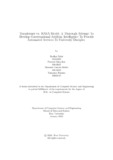Transformer vs. RASA model: A thorough attempt to develop conversational Artificial Intelligence to provide automated services to university disciples
Abstract
With the dynamic advancement of internet services over the past decade, chatbots,
also recognized as conversational agents, have risen to prominence. They are signif icantly acclimated to develop a useful digital expert that can succumb to questions
and provide comprehensive answers. The chatbots were designed to enhance com munity interaction in which they comprehend user inputs, get pertinent information
depending on the inputs, and reply using a unified framework. Going to college or
university to get necessary academic and supporting information like tuition fees and
term schedules can be a hassle for students. It can take a lot of time and effort, espe cially if they have to visit multiple schools or departments. It can also be frustrating
if they have to wait in line or if the information they need is not readily available.
Additionally, the process of getting this information requires staff to be available to
provide it, which can be costly and time-consuming for the school. So to address this
problem, in this study, we ideate and attempt to implement our conceptualization
to generate something that is interactive, easily accessible, and able to learn from
its interactions with students. There have been many chatbot developments using
various artificial intelligence models, but there are still many limitations in their
functionality. After conducting extensive research, we have identified two classified
models - Transformer and RASA model - to compare and evaluate their accuracy
in order to build a more effective conversational artificial intelligence. We hope to
gain a better understanding of their strengths and weaknesses by comparing these
two models and determining which model is more suitable for chatbot development.
This data will help to improve the overall performance and functioning of chatbots.

